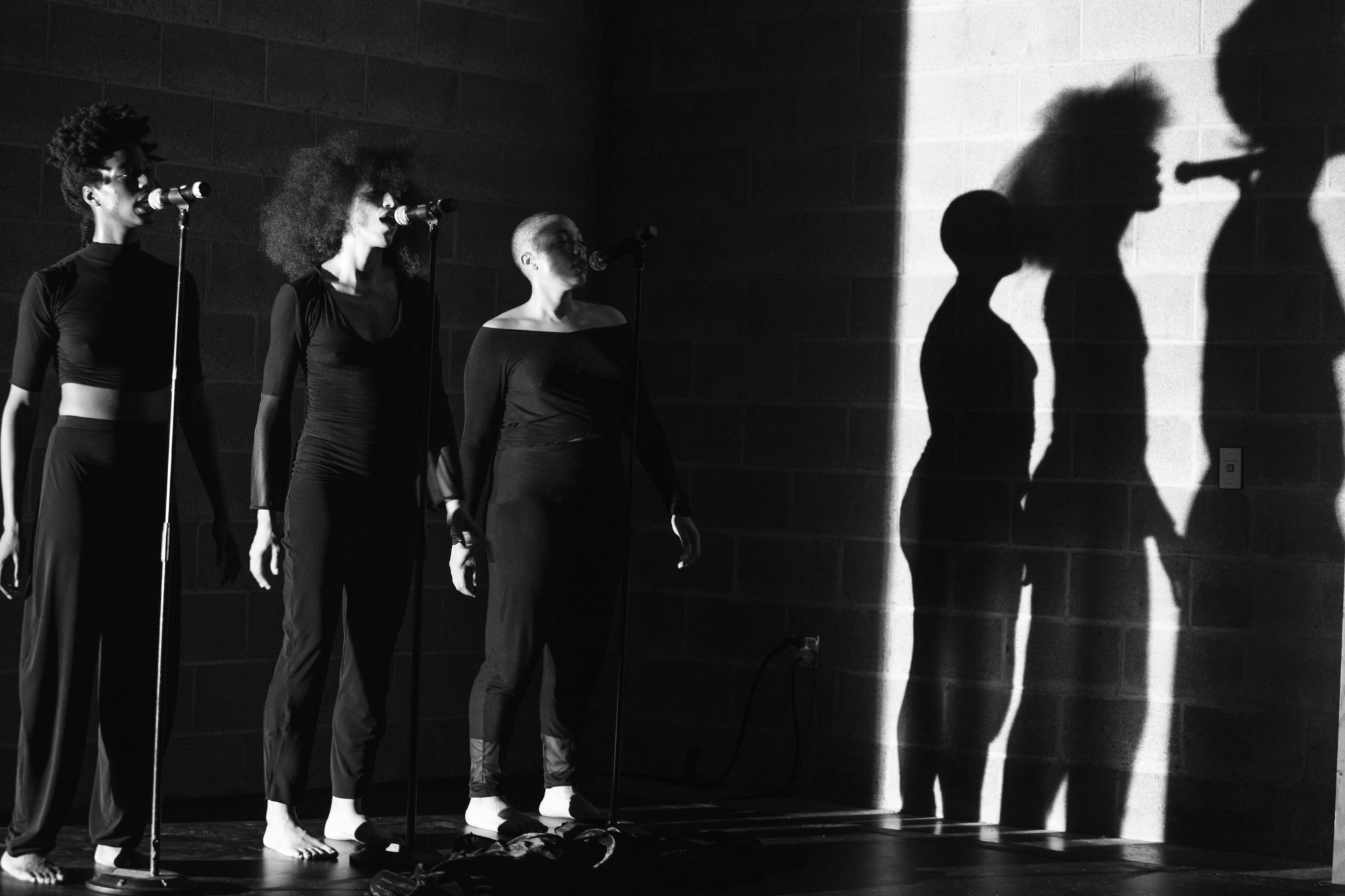
Ian Douglas
What remained with me after the Yale Repertory Theatre’s opening night production of “What Remains” is unexplainable. I walked out the Iseman Theatre with sounds still ringing in my ears, silhouettes of the ghostly chorus softly lingering in my mind. My steps were light. I can hardly explain how I left with this hazy understanding of a narrative resolution, but I don’t think I’m supposed to know — “What Remains” deconstructs certainties of performer-audience expectations, amplifying the ambiguity of language, movement, and narrative itself.
A collaboration of Bessie Award-winning choreographer Will Rawls and best-selling poet and MacArthur Fellow Claudia Rankine, “What Remains” began as a commission at the Bard College Fisher Center for Performing Arts. Rawls’ choreography, inspired by the visceral precision of Rankine’s poetry, broadly explores the surveillance of black bodies with a haunting palpability, turning heads with every jerk and sway.
“It’s an open-ended kind of watching,” Rawls told me during a phone call before the performance. “People need to be rather patient to find their footing, because it is such a world, and there’s a lot going on.”
In truth, I had no idea what to expect. I arrived early to claim a third-row seat and immediately noticed the four performers strolling the parameters of the stage. They were tossing back and forth – sometimes quietly and at others in a shout – a single foreign syllable, which I later recognized to be the word “you.” It was repeated and repeated until it became a vowel, a guttural scream, a high-pitch song; this was the experience of What Remains, the pushing and pulling of the boundaries of performance.
“As a black person, and as a performer, I’m always contending with the ways in which my blackness moves through space with me as I’m dancing,” Rawls said. “Dance allows for a breaking open of the certainty of categories and ideas of who a person is. Dance creates a lot of fantastic and charged moments between the audience and the performer, but they’re not always nameable. It excites me that there is a kind of ambiguity and elasticity that dance takes advantage of while moving through a bunch of ideas in a physical way.”
As time passes in the piece, the performance oscillates between perfectly timed group movements and the slow fraying of collective narratives; it feels like watching an accordion being stretched and then pushed together. The sound produced both includes and excludes the audience. At times, the dancers speak directly into the crowd, and at others, they are clustered to themselves in an upstage corner.
In what felt to me to be one of the most engaging segments, the dancers gathered around a covered soundboard and piano, prepping for a song. Jeremy Toussaint-Baptiste, composer and sound designer of the show, began playing the piano as the women began singing in an eerie combination performance and intimacy.Rankine praised the ability of dance to wield the abstract as a vehicle for narrative, an emotional thread that transcends what words can explain.
“I think for an audience member, it would be interesting to think about the freedoms they enter inside the piece due to the choreography,” she said.“Collective experience being accessed through the work of the dancers – that to me was really wonderful to watch unfold over time.”
It was indeed a challenge to “find my footing,” but the world of “What Remains” pulled me in. It is movement before you notice the swaying, sound before you know it envelopes you. I am not a poet. I barely know how to write about dance, but I left the show feeling overwhelmed, full of thoughts and contemplations. Perhaps that is what remains – meditations on how to engage and begin thinking about the issues it calls to surface.
Kyung Mi Lee | kyungmi.lee@yale.edu .







